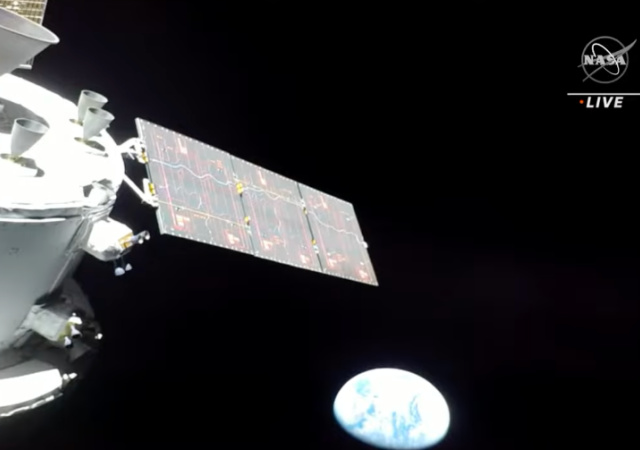Artemis I Moon Mission Launches Successfully….Finally

The National Aeronautics and Space Administration (NASA) team has successfully managed to overcome engine problems and hurricanes to launch the Artemis I moon mission.
The towering, 322-foot-tall (98-meter-tall) Space Launch System, or SLS, rocket lit its engines at 1:47 a.m. ET. It emitted up to 9 million pounds (4.1 million kilograms) of thrust to haul itself off the launchpad in Florida and into the air, streaking vibrantly across the night sky.Atop the rocket was the Orion spacecraft, a gumdrop-shaped capsule that broke away from the rocket after reaching space. Orion is designed to carry humans, but its passengers for this test mission are of the inanimate variety, including some mannequins collecting vital data to help future live crews.The SLS rocket expended millions of pounds of fuel before parts of the rocket began breaking away, and Orion was left to soar through orbit with just one large engine. That engine then set off two powerful burns to put the spacecraft on the correct trajectory toward the moon. Then, about two hours after liftoff, the rocket engine also fell away, leaving Orion to free-fly for the remainder of its journey.
The Orion capsule has already captured some impressive videos of Earth.
The uncrewed spacecraft began its 25-day mission around the moon at 2.00am EST (7:00am GMT) today onboard the Space Launch System (SLS) rocket.Space fans lined the beaches and roads outside the Kennedy Space Center in Florida to watch the historic launch of the $4 billion (£3.5 billion) mission.The 24-second clip shows the outline of our planet slowly shrinking away in the distance as the rocket accelerated to 12,000 mph (19,000 kph).The official Twitter account for Artemis wrote: ‘As @NASA_Orion begins the #Artemis I mission to the Moon, the spacecraft captured these stunning views of our home planet.’
The launch is part of NASA’s long-term plan to focus more on space exploration (hopefully less on social justice).
At its core, the Artemis 1 mission aims to show that the SLS rocket and Orion are ready to fly astronauts to the moon as part of a sustained program of lunar exploration that will ultimately enable crewed flights to Mars. NASA wants to use the vehicles to build a Gateway space station around the moon, then send crews there to use it as a home base for trips to the lunar south pole and other unexplored realms.NASA has said that Artemis 1’s goals are simple, but hard. A big priority is to show that Orion’s heat shield can survive the scorching-hot reentry temperatures (up to 5,000 degrees Fahrenheit, or 2,800 degrees Celsius) caused by returning home from the moon at 25,000 mph (40,000 kph). NASA also wants Orion to demonstrate that it’s ready to keep astronauts alive in lunar orbit. And the agency aims to successfully recover the capsule so it can be studied ahead of Artemis 2, the program’s first crewed flight around the moon, which is slated to fly in 2024.”This first mission is our first test of our deep space transportation systems before we put crew on them,” Jim Free, NASA’s associate administrator for exploration systems development, said before liftoff. “It is foundational in that sense. We need to learn about the vehicles before we put crew on them.”
May the rest of the journey be as successful as today’s launch.
CLICK HERE FOR FULL VERSION OF THIS STORY